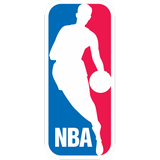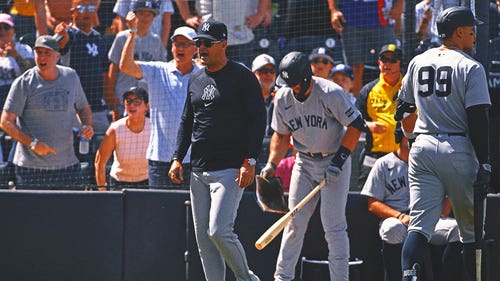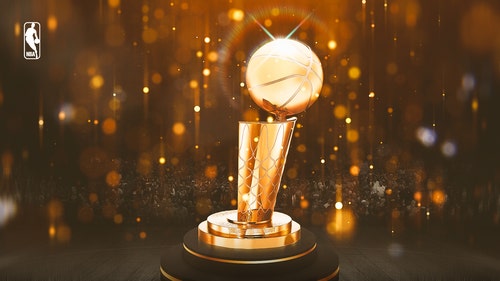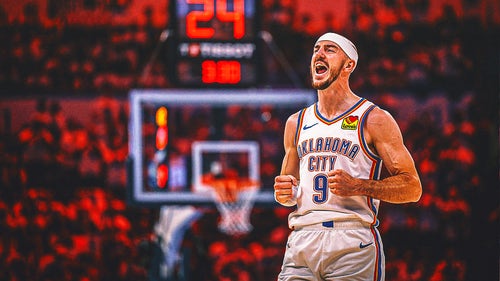
How new guys fit in with Celtics
Boston is a much different team after the shocking trade of Kendrick Perkins. Whether for better or for worse remains to be seen. But here’s what their relatively easy win over Phoenix portends for the Celtics’ immediate future.
NENAD KRSTIC -- 4-for-10, 4 rebounds, 13 points in 21 minutes. He seemed to be fairly comfortable. He made a neat drop-step and dunk on one post-up opportunity. For an encore, he executed a smooth up-and-under move for a layup. From mid-range, Krstic bagged one of three jumpers and made a couple of accurate entry passes. His defensive rotations and his shows on high screen/rolls were virtually impeccable.
On the downside, Krstic is so right-handed that he has to water his left hand twice a day just to keep it alive. This makes him very predictable in certain situations in the shadow of the hoop, which in turn makes him a poor finisher in heavy traffic. Indeed, he missed a pair of slightly complicated layups and also had one blocked.
Overall, Krstic is more of a finesse player than a power player. Eventually his normally accurate jumper will be used for profit in high screen/pop situations. Still, he was repeatedly bullied by Robin Lopez and his 6-11, 210-pound body occupies minimal (and only temporary) space in the paint.
If Krstic brings more mobility and extended offense to the Celtics mix, he has absolutely no presence in defending the low-post. Krstic will need help in trying to contain the likes of Dwight Howard and Andrew Bynum. So Boston is now forced to rely on more double-teaming than they have in the past -- and their trademark ultra-physical defense is currently compromised.
“Currently” is the key word here. If Jermaine O’Neal has nothing left, Shaq’s mass and strength should certainly be available for the playoffs.
Glen Davis does provide a modicum of interior power. If he’s undersized at 6-9, Big Baby still tilts the scales at more than 300 pounds -- and his lower center of gravity enables him to excel against larger opponents when push comes to bang. However, like Krstic, Davis isn’t a reliable finisher. And there's the matter of aggravating an existing knee injury in the final minute Wednesday night.
In other words, there’s no way the Celtics can hope to be the champs unless and until Shaq is back in action.
JEFF GREEN -- 3-6, 6 points in 16 minutes -- He had more trouble adjusting to what the Celtics were doing at both ends of the court. On one telling offensive sequence, he found himself without the ball under the basket and did a 360 trying to determine where he was supposed to be and what he was supposed to be doing. His confusion and anxiety were also demonstrated when he launched a long-distance air ball the very first time he touched the ball.
It’s understandable that Green was likewise hesitant on defense, but he managed to create a turnover when he battled his way through a screen. Green also showed good anticipation when he stepped into a passing lane, stole the pass and then ran for a coast-to-coast dunk.
When he learns the system, Green can provide Boston a versatile point-maker off the bench, as evidenced by an unstoppable turn-face-and-fade jumper he showed on his second touch. This means more rest for Kevin Garnett and an even more versatile offensive game plan than before.
TROY MURPHY -- 0-3, 2 rebounds, one point in 14 minutes -- He had even less practice time with his new team than did Krstic and Green. Plus, Murphy did more sitting than playing with the Nets.
Once he regains his chops, Murphy can pull down strong-handed rebounds and also stretch defenses with his 3-point shooting (39 percent lifetime). Meanwhile, he set a couple of beneficial screens, executed several alert defensive rotations and challenged every shot that was taken in his neighborhood.
Too bad that at 6-11, 245 lbs., he’s another straw man in the paint. And with his less-than-average athleticism, there’s not enough junk in his trunk to make him a dependable finisher -- as evidenced by two of his interior shots getting swatted.
Look for Murphy to be used in the same kind of screen/pop situations as Krstic, the only difference being the utilization of Murphy’s more expansive shooting range.
Shaq can certainly duplicate Perkins’ solid screens, but lacks the quickness to roll to the hoop as effectively as KP. This will certainly diminish the frequency of open shots available for Ray Allen.
Nevertheless, the offense will show better spacing, which means more room for dive- and back-cuts and more lanes for Rajon Rondo’s hot-footed drives. Another significant benefit is improved perimeter shooting.
The biggest (literally) deficit is the reduction of beef poundage in the middle that will remove some of the grunt from their defense.
So the most relevant question is this: Aside from the expanded offensive possibilities, why was Perkins traded?
After all, the big fellow set monstrous screens and played mean-spirited, space-eating defense. In truth, Perkins had a considerable number of downsides that made the deal advisable:
The drastic knee surgery that Perkins underwent last spring normally requires a full year to rehabilitate. But he was back on the court in about seven months, whereupon he quickly suffered a serious sprain in his other knee. So, here’s a 6-10, 280-plus pound big man with the likelihood of developing chronic knee problems.
Moreover, as a free-agent-to-be, he turned his nose up at Boston’s offer of four years and $22 million, demanding $30 million over the same period. Perkins has since signed a four-year extension with the Thunder that’s been estimated to pay approximately $33 million.
It’s a stretch to shell out that kind of money for what is essentially a role player with questionable wheels.
Also, Perkins had the notion that he was more of a team leader than he actually was. Perhaps he did want to lead, but none of his Celtic teammates wanted to follow him.
What was much more of a dubious move was dealing Semih Erden to the Cavs for marginal draft choices. He’s young, energetic, smart, big and talented enough to provide 10 or so emergency minutes in the middle. Erden is certainly a serviceable and rapidly improving backup at center.
In any event, Boston’s hopes of eventually beating the Lakers depends on the Big Bopper’s ability to make a full recovery and to be able to play 25-30 bully-boy minutes per game.
RANTS
For Goran Dragic to be effective, he needs to handle the ball as much as a point guard does. Unfortunately, he’s a shooting guard in disguise. If used properly, he could provide adequate backup minutes behind the equally defenseless Kevin Martin.
Another new Rocket, Hasheem Thabeet could very well be the least talented player in the NBA. His per-minute career averages reflect his general ineptitude: One blocked shot every 11.7 minutes -- not enough for a player who supposedly specializes in swats. One rebound every 3.9 minutes -- slightly less than the 3:l ratio that’s the standard for centers. One personal foul every 5.3 minutes -- unacceptable. One point scored every 4.8 minutes -- that’s double figures if he plays an entire game. The numbers add up to his being a barely adequate third-string big man.
Ah, but he’s 7-3.
RAVES
Should Kendrick Perkins ever get his wheels properly aligned, look for Kevin Durant to greatly benefit from his massive screens. That means much less wear-and-tear on the lean KD. Although Perkins is foul-prone and has minimal offense, acquiring him will pay huge (literally) dividends for the Thunder.
Despite going from a pseudo-contender to a bona fide loser, Deron Williams will come to enjoy escaping from the Sloan-Corbin straightjacket that severely limited his game in Utah. Under Avery Johnson, an ex-point guard, Williams will have more freedom to stretch his considerable talents. And by the time D-Will is a free agent, Mikhail Prokhorov will certainly spend enough rubles to upgrade the Nets into at least a playoff-quality team.
Look for Aaron Brooks to thrive in Phoenix’s speedball game. The fact that he plays no defense will barely be noticed since most of his teammates are similarly handicapped.
Kirk Hinrich will do wonders for toughening up the soft underbelly of the Hawks. This guy is as tough as anybody. He can more than adequately defend point guards, shooting guards and even small forwards. While Hinrich isn’t a true knock-down shooter, he’s extremely dependable in the clutch. At the same time, Atlanta’s ridding themselves of Mike Bibby was painless since he can’t guard, can’t get to the rim and his only value is hitting uncontested 3-balls.
Which means that adding Bibby will be of minimal benefit to Miami. Although Bibby used to be a wonderful clutch shooter, all the win-or-lose shots will be taken by LeBron. Overall, Bibby is merely a smarter and slower version of Mario Chalmers.
Gerald Wallace is a streaky shooter, but he’ll amp up Portland’s defense, speed up their running game and give them a hoop-attacking presence to compliment their jump-shooters.
If the Hornets give Carl Landry enough game- and ball-time, he can blossom into a big-time point-maker.
Marcus Thornton can’t do much else, but he can make a scoreboard blink and flash like a pinball machine. Watch him become Sacramento’s go-to point-maker.










